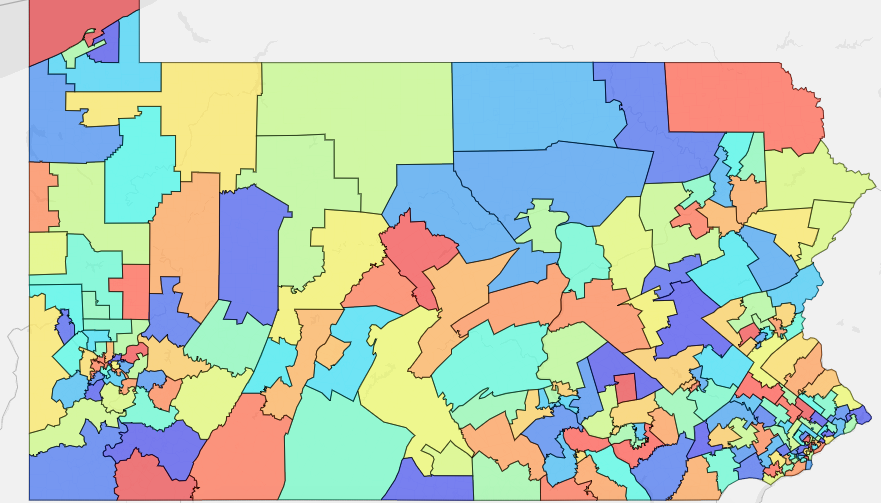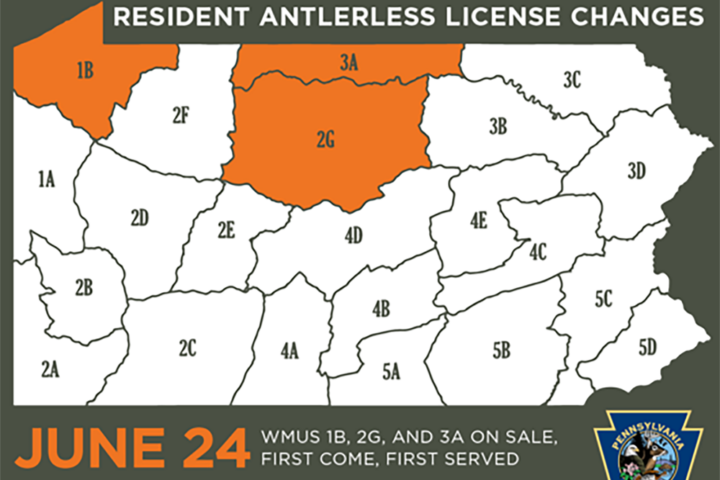by Stephen Caruso, Pennsylvania Capital-Star
The panel charged with once-a-decade redrawing of Pennsylvania’s 253 legislative districts has approved final drafts of the maps that’ll likely increase minority representation in the General Assembly, and likely close the gap between its Republican majority and the Democratic minority.
During a meeting on Friday, the Legislative Reapportionment Commission approved the redrawn state House and Senate districts in a 4-1 vote., Anyone who opposes the map now has until Sunday, March 6 to file a challenge in the state Supreme Court.
House Majority Leader Kerry Benninghoff, R-Centre, cast the lone opposing ballot.
The rest of the commission, including Chairman Mark Nordenberg, Senate Majority, and Minority Leaders Kim Ward, R-Westmoreland, and Jay Costa, D-Allegheny, and House Minority Leader Joanna McClinton, D-Philadelphia, voted to approve the maps.
Nordenberg said he wanted to do the job well, and said the finished product reflected their commitment — at one point comparing the proposed House map to basketball player LeBron James.
“I believe we have succeeded by virtually any measure,” Nordenberg said. “Even if imperfect, these are good maps. They are responsive to the requirements of the law and are in the interest of the people of Pennsylvania for the next decade.”
Nordenberg, the former chancellor of the University of Pittsburgh, was appointed by the state Supreme Court to the commission after the legislative leaders deadlocked on picking a chair.
In the House, the draft maps provoked Republican outrage, which the final draft did not assuage.
Benninghoff and his House GOP colleagues have claimed the maps unfairly benefit Democrats, forcing a disproportionate number of GOP incumbents into primary matchups while increasing the number of safe Democratic districts by “slicing and dicing” a handful of majority-minority central Pennsylvania cities, such as Harrisburg, Lancaster, and Reading.
“A balancing of representational political interests is neither required by the Pennsylvania Constitution nor can it trump the constitutional redistricting criteria of population equality, compactness and avoiding political subdivision splits except where absolutely necessary,” Benninghoff said in a written exception to the map filed Jan. 15.
But Nordenberg and McClinton have countered that Democratic gains were a result of declining rural populations, growing Black, Latino and Asian communities, and the undoing decades of partisan and pro-incumbent gerrymandering that has benefited both parties.
McClinton, the first Black woman to serve as minority leader, took particular exception to Benninghoff’s attack that the map was a racial gerrymander.
The House map’s supporters have argued that the city splits create new districts with a critical mass of minority voters — about a third or more of the voting age population — that also do not have incumbents. This will create a clearer path for these communities’ chosen candidates to win the seats.
“To suggest I — whose grandmother could not vote … come as the first Black to this table and am trying to disenfranchise people of color … is very personally disrespectful,” McClinton said.
Before Friday’s vote, Benninghoff offered his own House map. It reduced municipal splits — such as by reuniting Harrisburg and Lancaster into single districts while concentrating minority voter power and reducing the number of Democratic districts near these cities.
Overall, Benninghoff’s map creates four fewer minority opportunity districts than the commission’s map — 39 vs. 43 — though it creates one additional majority-Latino district in Reading.
Where to draw the lines in Black, Latino communities at center of Pa. legislative map fight
The draft Senate map was subject to much less public debate Friday since Senate leaders Ward and Costa negotiated the map themselves. 
Their compromise Senate map mostly shored up incumbents in both parties, while creating new districts in the Lehigh Valley and central Pennsylvania. The map also restored a likely Democratic seat to Harrisburg and its suburbs
“It’s hard not to do gerrymandering to create competitive districts,” Ward said.
With the final approval Friday, those who oppose the map have 30 days to file a lawsuit in the state Supreme Court, with court arguments and a decision to follow.
This timeline is misaligned with the state election calendar. Under state law, candidates for office have between Feb. 15 and March 8 to collect signatures within their district to get on the May primary ballot, but map opponents will be able to file new lawsuits up until March 6, throwing the May primary into doubt.
A legal action asking the courts to move back the petition period for candidates has already been filed in the lower Commonwealth Court. The Supreme Court is considering similar action for congressional candidates since that map also had not been finalized as of Friday.
Pennsylvania Capital-Star is part of States Newsroom, a network of news bureaus supported by grants and a coalition of donors as a 501c(3) public charity. Pennsylvania Capital-Star maintains editorial independence. Contact Editor John Micek for questions: [email protected]. Follow Pennsylvania Capital-Star on Facebook and Twitter.



























